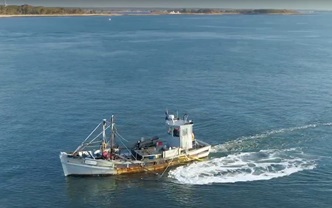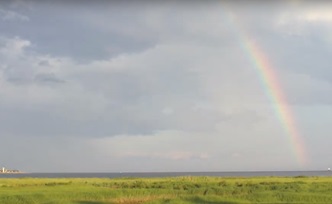A National Estuarine Research Reserve
for Long Island Sound
Check Status Update
 Long Island Sound is one of Connecticut's greatest natural treasures. The Sound provides countless recreational opportunities, serves as a critical habitat for fish and other marine wildlife, and improves the quality of life in Connecticut. Preserving its health and productivity for future generations, therefore, requires sustainable management of its resources.
Long Island Sound is one of Connecticut's greatest natural treasures. The Sound provides countless recreational opportunities, serves as a critical habitat for fish and other marine wildlife, and improves the quality of life in Connecticut. Preserving its health and productivity for future generations, therefore, requires sustainable management of its resources.
Connecticut's Coastal Management Program, established in 1980, coordinates efforts at the municipal, state, and federal levels of government to better protect Long Island Sound and its resources. The Long Island Sound Blue Plan, which has been underway since 2015, provides an inventory of Long Island Sound's natural resources and uses and, ultimately, develops a spatial plan to help guide future use of the Sound's waters and submerged lands. And yet, the barrage of deleterious impacts to Long Island Sound makes it more important than ever to supplement these existing efforts with additional information to help make critical management decisions affecting Connecticut's coastal resources. One such source of additional information can be found within the National Estuarine Research Reserve System.
What is a National Estuarine Research Reserve?
The National Oceanic and Atmospheric Administration's (NOAA) National Estuarine Research Reserve System (NERRS) is a network of 28 coastal areas designated to protect and study estuarine systems. Created by the Coastal Zone Management Act, the reserves are a formal partnership between NOAA and coastal states. Each reserve is managed by a lead state agency or university, with input from local partners, for which NOAA provides funding, guidance, and technical assistance. The reserves cover 1.3 million acres of estuaries and focus on Resource Stewardship, Training, and Education.
Why does Connecticut need a Reserve?

A healthy and productive Long Island Sound is our greatest natural resource and contributes an estimated 7 billion dollars annually to the regional economy. The Sound, like other estuaries around the country, is constantly threatened by development, pollution, invasive species, and the effects of climate change – to name just a few. These and other threats underscore the need to have the right information in order to make critical management decisions affecting our coastal resources.
NERRS is a vital program that can help provide the information decision-makers need. Connecticut, however, is one of only two marine coastal states without a Reserve. A Connecticut-based Reserve would complement and extend the activities of programs like the EPA National Estuary Program, the Connecticut Coastal Management Program, the Connecticut Sea Grant office, and various academic institutions through the addition of funding, resources, and expertise. Additionally, it would enable new directions and initiatives by leveraging nation-wide programs. The health of the Sound's ecosystem and the state economy can only benefit from establishing a Reserve.
How does Connecticut establish a Reserve?
 The State and NOAA have instituted an effort to select and designate a Reserve through the Department of Energy and Environmental Protection's Land and Water Resources Division (LWRD). LWRD has subsequently engaged the UConn Marine Sciences Department and the Connecticut SeaGrant office to form a leadership team to guide the process. The first step begins with engagement of a diverse range of expertise and interests in the coastal area and an assessment focused on evaluating existing lands already held in protection. Public information meetings are held to present information and solicit input. The process itself applies an expansive suite of environmental and organizational criteria to evaluate various potential locations and culminates in a formal report nominating a site.
The State and NOAA have instituted an effort to select and designate a Reserve through the Department of Energy and Environmental Protection's Land and Water Resources Division (LWRD). LWRD has subsequently engaged the UConn Marine Sciences Department and the Connecticut SeaGrant office to form a leadership team to guide the process. The first step begins with engagement of a diverse range of expertise and interests in the coastal area and an assessment focused on evaluating existing lands already held in protection. Public information meetings are held to present information and solicit input. The process itself applies an expansive suite of environmental and organizational criteria to evaluate various potential locations and culminates in a formal report nominating a site.
Following an approval from NOAA, the State, with assistance from NOAA, will then work to develop and submit a management plan for NOAA's review. At the same time NOAA, with the State's assistance, will develop Draft and Final Environmental Impact Statements for the NERR designation. When the Reserve is approved by NOAA, the State and NOAA will sign a Memorandum of Understanding designating the operation of the new reserve.
Status Update
The process to nominate a National Estuarine Research Reserve (NERR) in Connecticut has selected a preferred site, which includes the following state-owned properties:
- Lord Cove Wildlife Management Area;
- Great Island Wildlife Management Area;
- Bluff Point State Park, Coastal Reserve and Natural Area Preserve;
- Haley Farm State Park; and,
- The public trust portions of waterbodies defined by:
- Long Island Sound ranging approximately west to east from the mouth of the Connecticut River to Mason's Island and north to south waterward of the mean high water shoreline to just shy of the Connecticut state boundary in Long Island Sound;
- The area waterward of the mean high shoreline of the lower Thames River from approximately the Gold Star Bridge south to the area described in a., above;
- The area waterward of the mean high shoreline of the lower Connecticut River from approximately Lord Cove south to the area described in a., above.
Connecticut has submitted a site nomination to the National Oceanographic and Atmospheric Administration (NOAA) as of January 3, 2019. More information on the nomination and the selection process can be found under the "NERR Information" link below. Once a decision from NOAA is received, we will update this page accordingly.
Find out more
For more information on the process to establish a NERR in Connecticut, please:
- See the Frequently Asked Questions About a Research Reserve for Connecticut;
- email DEEP.NERR.contact@ct.gov; and,
- Join the DEEP NERR Listserv to receive notification of NERR team meetings, web postings, and other information; or,
- Contact:
Kevin P. O'Brien, Supervising Environmental Analyst
LWRD Coastal Resources Section
Connecticut Department of Energy and Environmental Protection
79 Elm Street, Hartford, CT 06106-5127
Phone: 860.424.3432
Fax: 860.424.4054
Content Last Updated February 19, 2020

